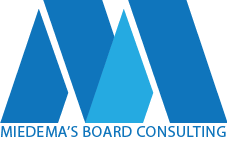Trust is emerging as one of the key indicators of board and organizational success. Boards need to ensure that the relationships on and between the board and organization are healthy before they invest time in planning and details. If the team is not working together on a common goal they are unlikely to succeed.
Trust is a complex mix of credibility, confidentiality, reliability, risk and the willingness to be vulnerable. Trust between two people is something everyone can understand and relate to. They can usually sense when it is working well and when it is not. Multiplied between ten or twenty people, it requires careful orchestration and work. It takes time to develop but can be wiped out in an instant. The trust relationships must be strong between the CEO and board chair, between the CEO and the board as a whole and within the board itself.
Breakdowns in trust can occur for a number of reasons. If there is a board-within-a-board such as a powerful executive committee or an inner circle that has access to information that the rest of the board does not, board members will start to disengage. If the CEO is not completely transparent with information or restricts communications, board members will question his or her judgement and decisions.
Indications that there are issues of trust include disinterested board members, micromanaging, mixed messages, control of information, blaming others, failure to follow-up on commitments, jumping to conclusions, open hostility or sudden in-camera sessions without the CEO.
Boards need to spend time and effort building trust. It begins with the expectations and information that are communicated during recruiting. It then builds during orientation, gets reinforced during board meetings and is maintained between board meetings. With each new member of the team the process starts all over again. It is important that at all these touch-points, communication is transparent and consistent, opportunities are given to interact socially, there is a culture of positive dissent and conflict is dealt with. A Board Policy Manual can play a key role in establishing the rules of engagement and the expectations and communications between the CEO and the board thereby empowering the CEO to do their job to the best of their abilities.
Efforts to build trust will be rewarded with engaged board members, faster and better decisions and a team focused on a common goal instead of wasting time and energy on interpersonal dynamics.







